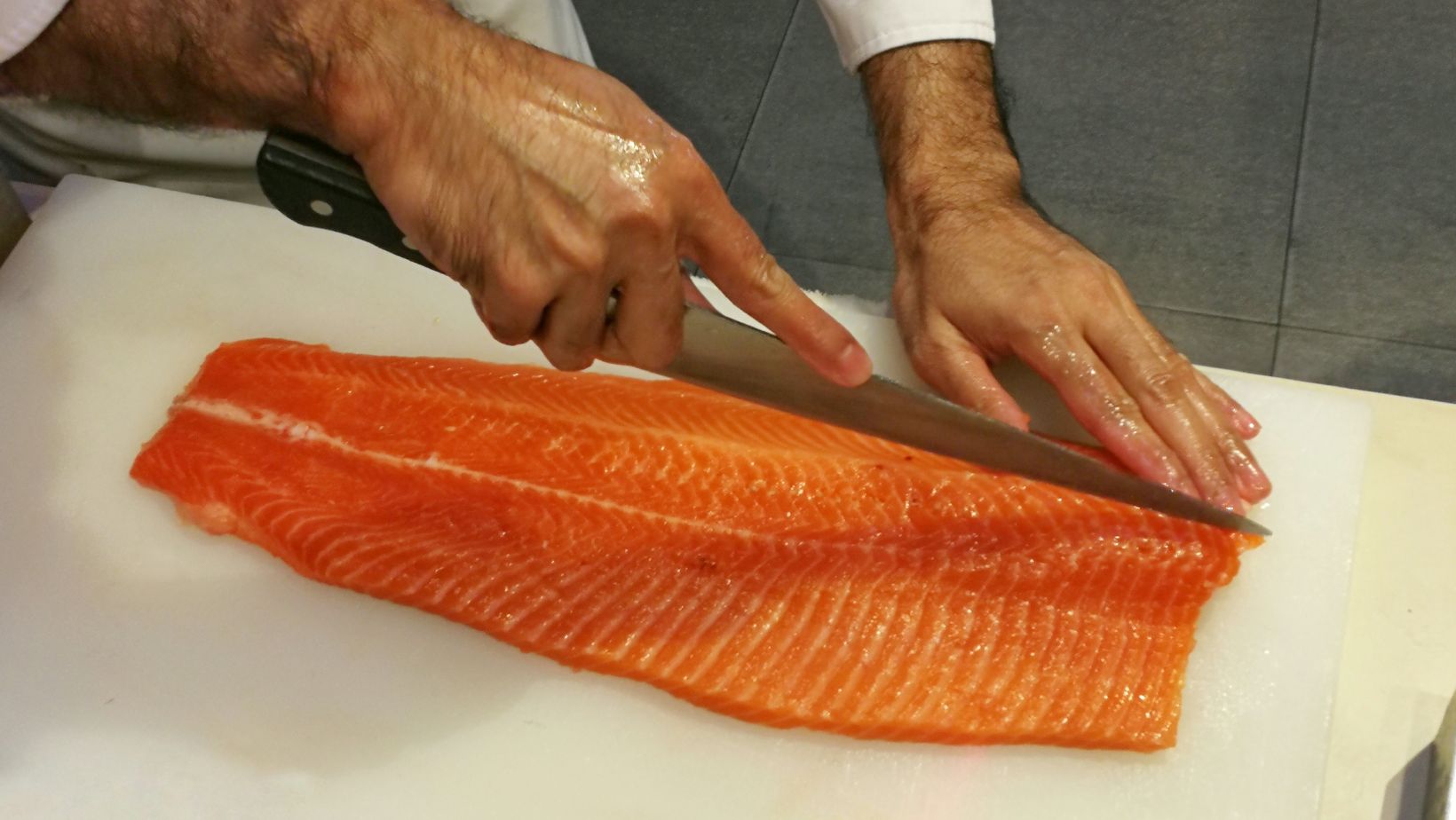Gaining proficiency with knives is a prerequisite for culinary proficiency. The efficiency and inventiveness of future chefs and culinary arts students can be greatly impacted by their knife skills. For safe and accurate food preparation, mastering the use of a chef’s knife, paring knife, and other necessary instruments is key.
Cutting ingredients is only one aspect of knife abilities. They entail knowing the many kinds of blades, keeping edges sharp, and using different cutting methods. These abilities are the cornerstone of culinary expertise, ranging from simple chopping and slicing to more complex techniques like chiffonade and julienning.
Accredited culinary schools teach their students how to use knives with assurance and accuracy. As they advance, they learn how masterful knife skills may improve overall cooking quality and elevate food presentation. This proficiency encourages artistic expression and culinary innovation in addition to enhancing kitchen performance.
Key Takeaways
- The ability to use knives properly is essential for both kitchen safety and culinary proficiency.
- Gaining proficiency in a variety of cutting methods improves productivity and dish presentation.
- Developing superior knife abilities requires constant practice and knowledge.
Mastering Knife Techniques and Safety
The cornerstones of culinary competence are accurate cutting methods, consistent maintenance, and safe knife use. These abilities guarantee safety, increase kitchen productivity, and improve food presentation.
Essential Knife Cuts and Their Differences
It is essential for culinary students to learn different knife cuts. For thick soups, the large dice yield 3/4-inch pieces. For sautéed veggies, medium dice produce 1/2-inch cubes. 1/4-inch cubes made from small dice are ideal for garnishes and salsas.
Julienne cuts, which are frequently used in stir-fries, produce thin, matchstick-like strips that measure 1/8 x 1/8 x 2 inches. For sophisticated garnishes, Brunoise, a finer cut, yields small 1/8-inch cubes. Rolling leafy vegetables or herbs and cutting them into thin ribbons is known as chiffonade.

When done at a 45-degree angle, the bias cut increases surface area to speed up cooking and enhances dish appearance.
Knife Handling and Grips
A good grip is necessary for both safety and control. With the remaining fingers wrapped around the handle, the pinch grip entails holding the blade between the thumb and forefinger. For the majority of cutting jobs, this grip provides control and accuracy.
The handshake grip, which involves holding the handle in a handshake-like manner, offers stability for demanding jobs like chopping tough vegetables or breaking down poultry.
It is important to keep your cutting board steady. To avoid slippage, place a moist cloth underneath. When handling food, keep your fingertips curled under and use your knuckles to guide the blade.
Maintaining and Storing Knives
Sharp knives are more effective and safer. Regularly sharpen knives by realigning the edge with an honing rod. To preserve the edge, frequently sharpen knives using a whetstone or a professional sharpening service.
After using knives, immediately wash them in warm, soapy water and make sure they are completely dry. For safety and edge protection, keep blades in a knife block, magnetic strip, or blade guards.
Purchase high-quality knives, such as a serrated knife, paring knife, and chef’s knife, as these are necessary equipment. These knives will be useful to culinary students for the rest of their lives if they are properly maintained.
Advanced Knife Skills for Culinary Artistry
A chef’s ability to produce aesthetically pleasing and well-prepared food is enhanced by advanced knife skills. These methods emphasize accuracy, presentation, and specialized work that demonstrates culinary skill.
Precision Cutting and Presentation
Using precise cutting methods is crucial to producing consistent, eye-catching food. Roll cutting, another name for the oblique cut, creates angled pieces that are perfect for soups and stir-fries. Holding the knife at a 45-degree angle to the vegetable, make this cut by rolling it a quarter turn in between each cut.
The delicate 1/8-inch cube cut known as brunoise calls for precise knife control. To make little cubes, start by julienning the item, then flip the strips over and cut across. This cut gives food texture and is ideal for garnishes.

For leafy herbs and vegetables, chiffonade, a ribbon-like cut, improves presentation and flavor. To make fine strips, stack the leaves, roll them tightly, and then cut them thinly across the roll.
Specialized Skills: Deboning and Filleting
Advanced methods like filleting and deboning show off a chef’s dexterity and skill. To preserve the shape of the bird for stuffing or presentation, gently separate the meat from the bones when deboning chicken with a sharp boning knife.
Scales and fins should be removed first when filleting fish. To split the fillet, cut along the backbone after making an incision behind the gills. To reduce waste and preserve the integrity of the fillet, use lengthy, smooth strokes.
For these jobs, choosing the right knife is essential. A strong boning knife is better for meat and poultry, while a flexible fillet knife is best for fish. Mastering these methods requires consistent practice and focus on the structure of the substance.
In Closing
For students studying culinary arts, mastering fundamental knife skills is necessary. In the kitchen, proper technique improves accuracy, safety, and efficiency. Students can get the control and dexterity necessary to confidently perform a variety of cuts with repetition. These fundamental abilities support overall performance in the culinary arts industry and serve as the cornerstone for more complex culinary procedures.
























